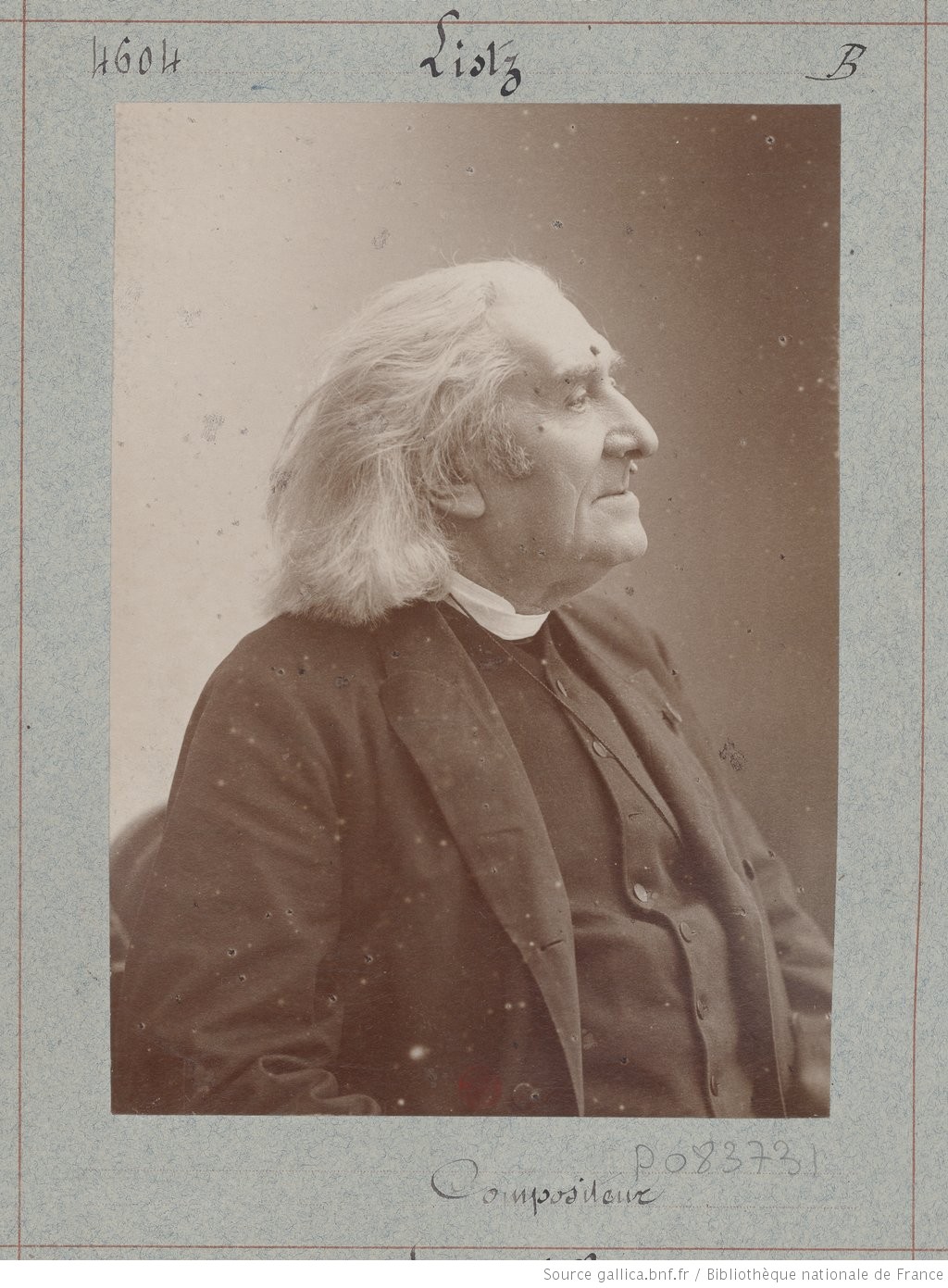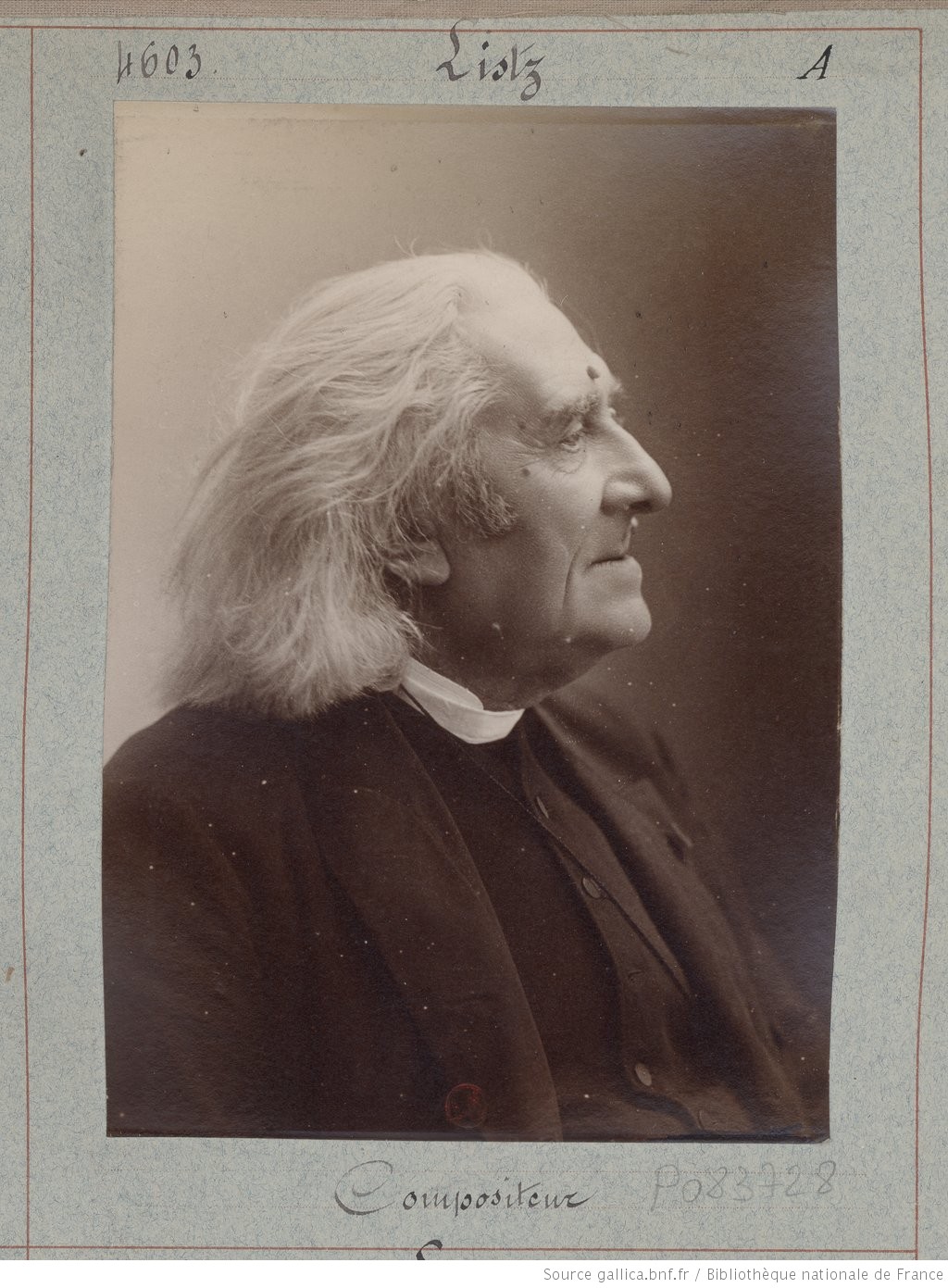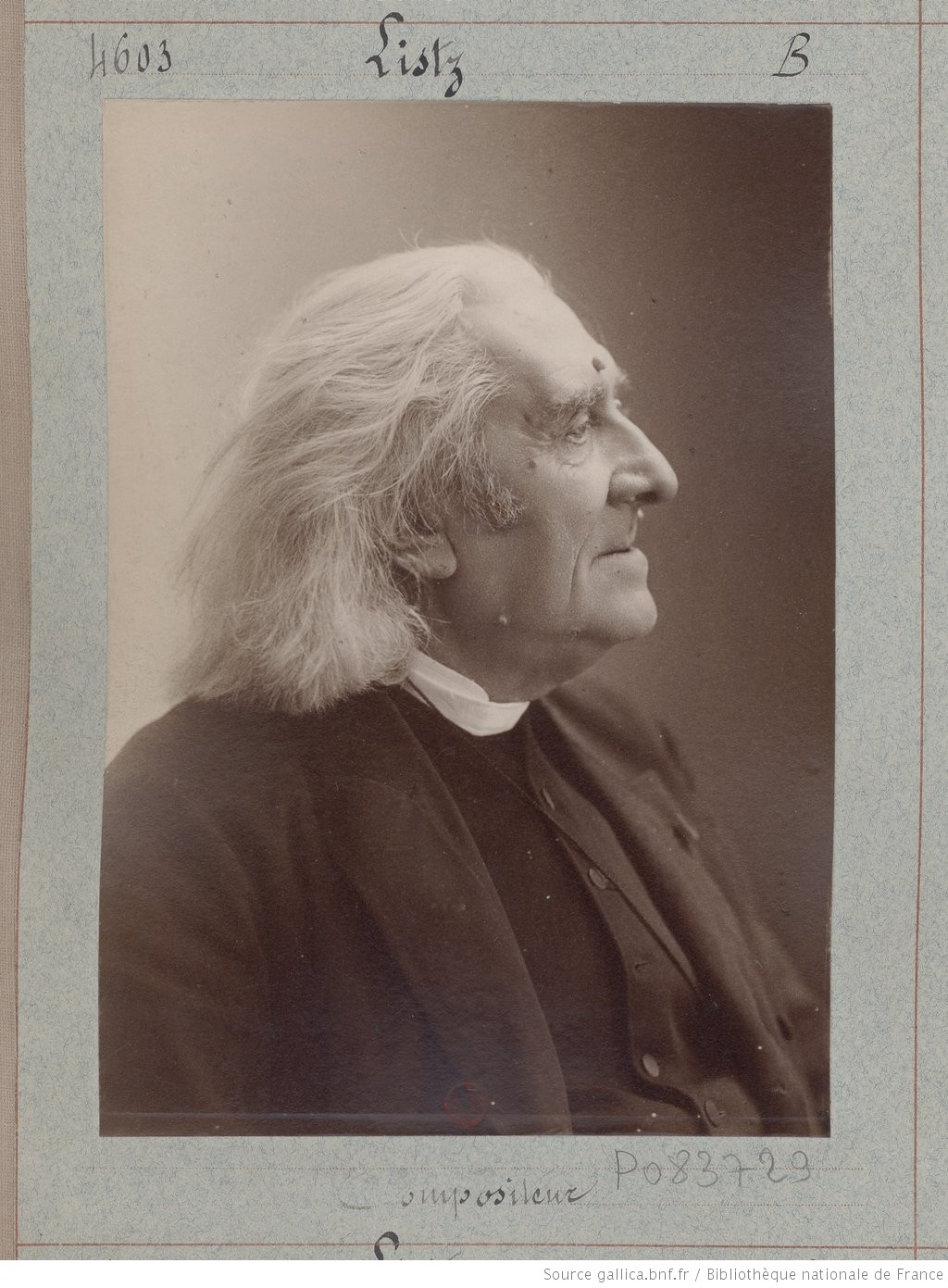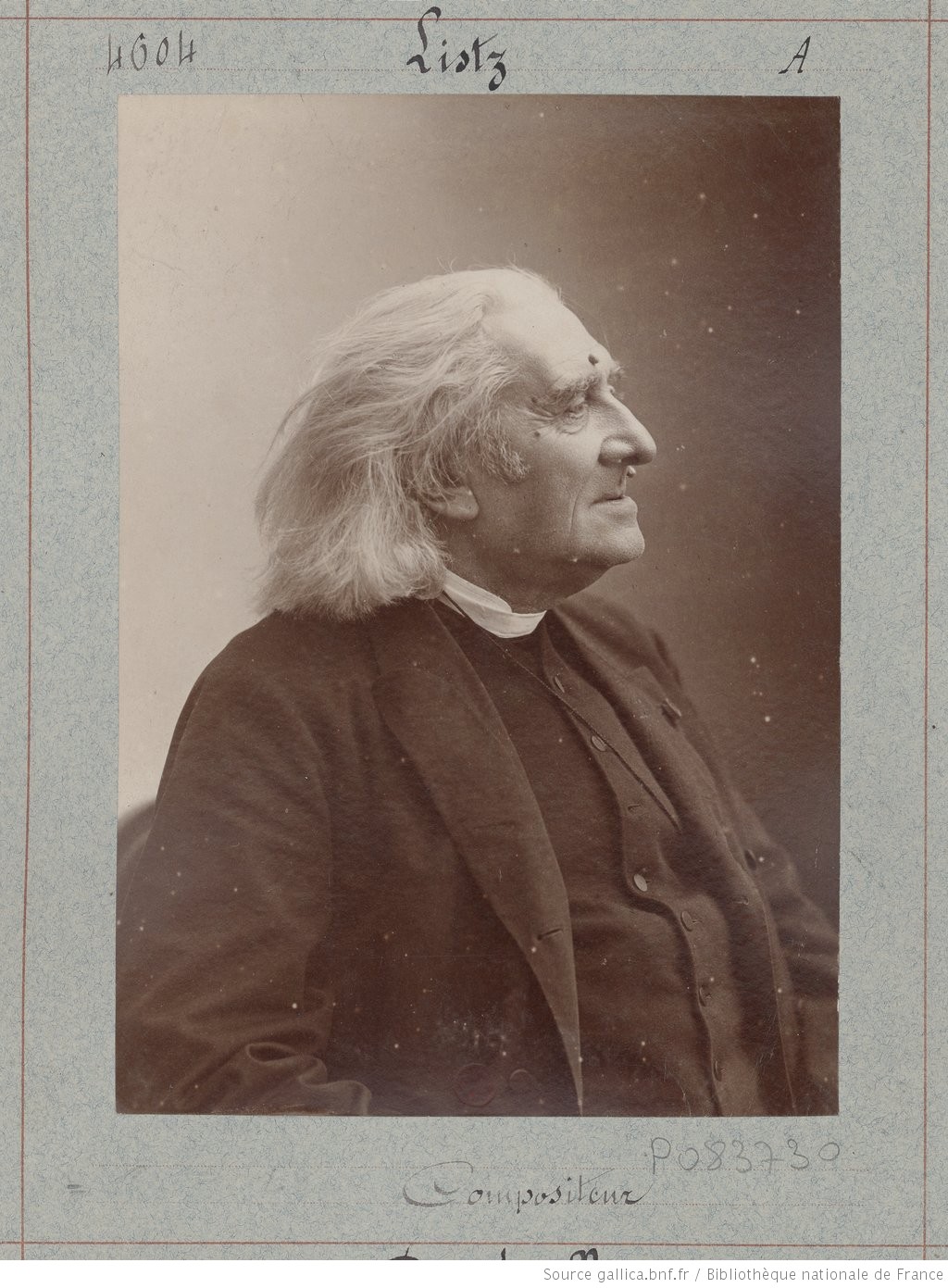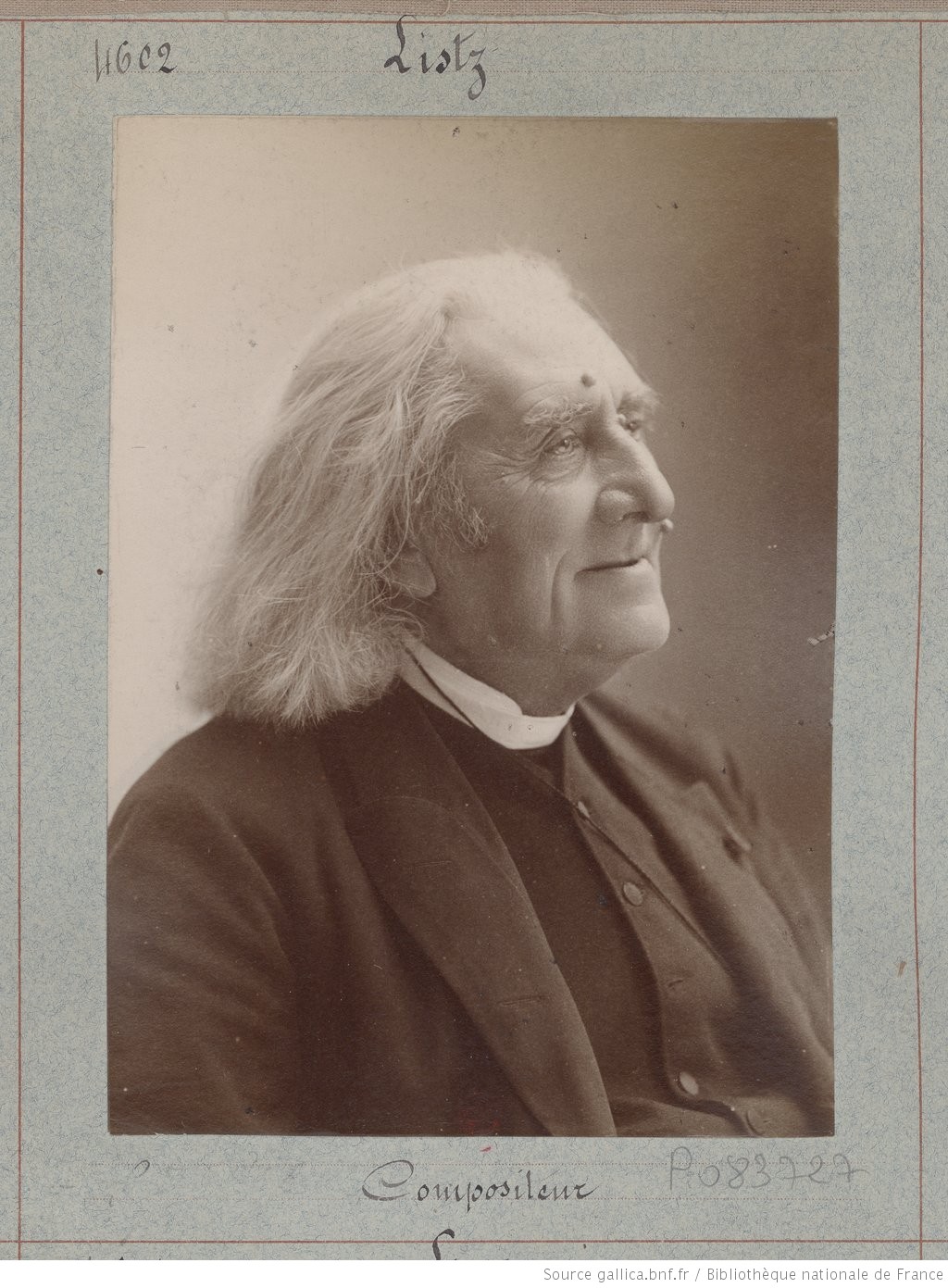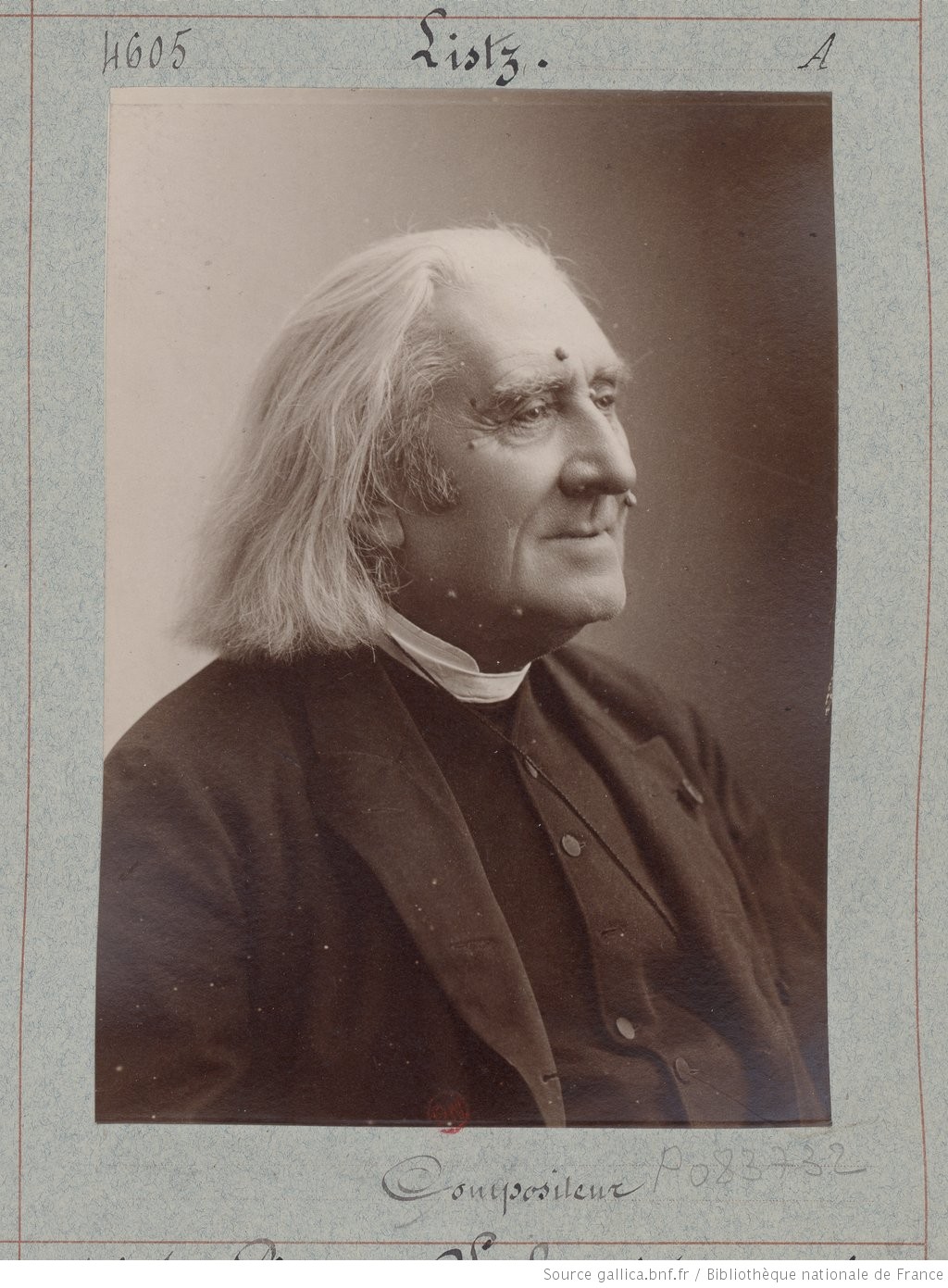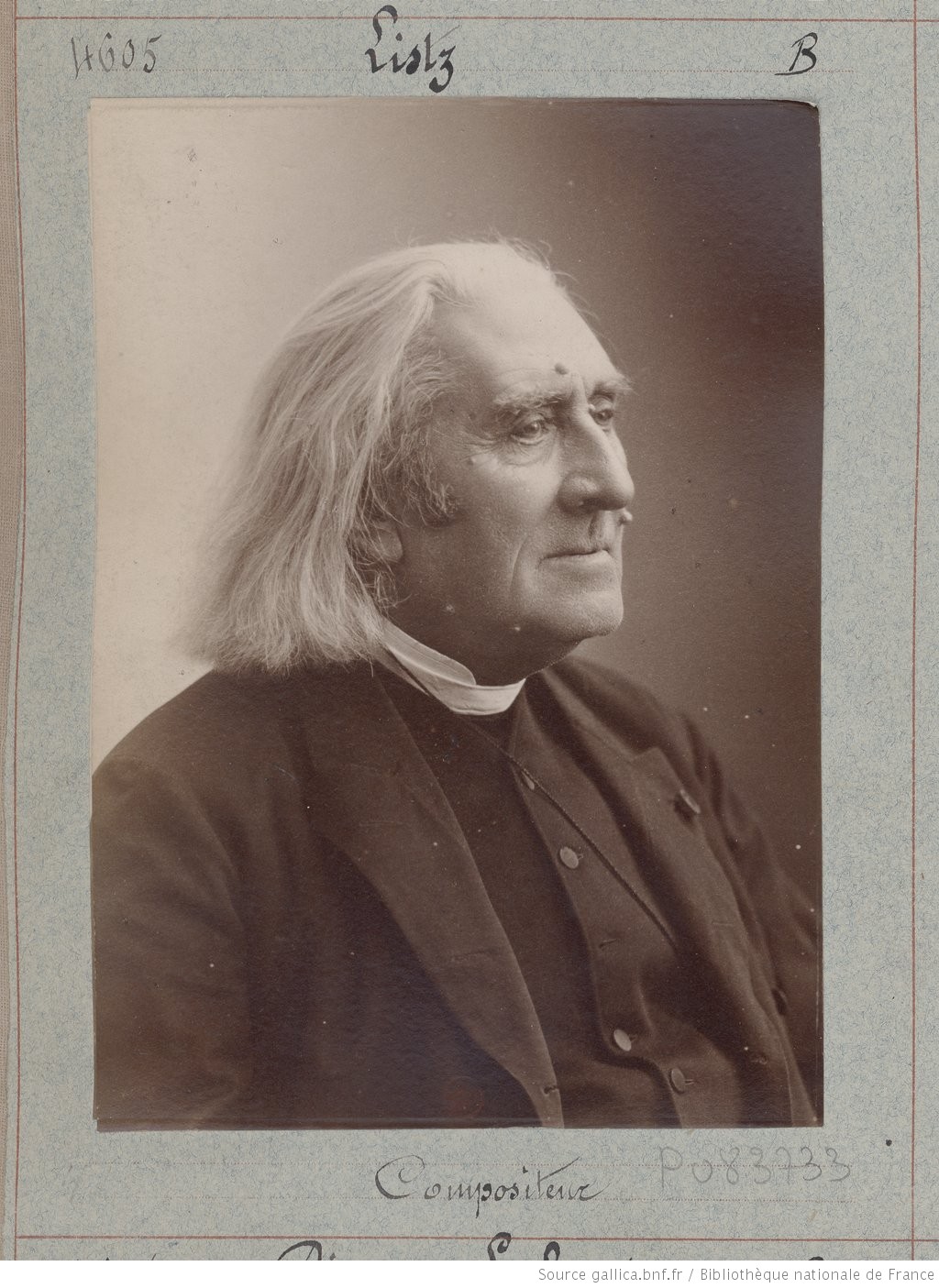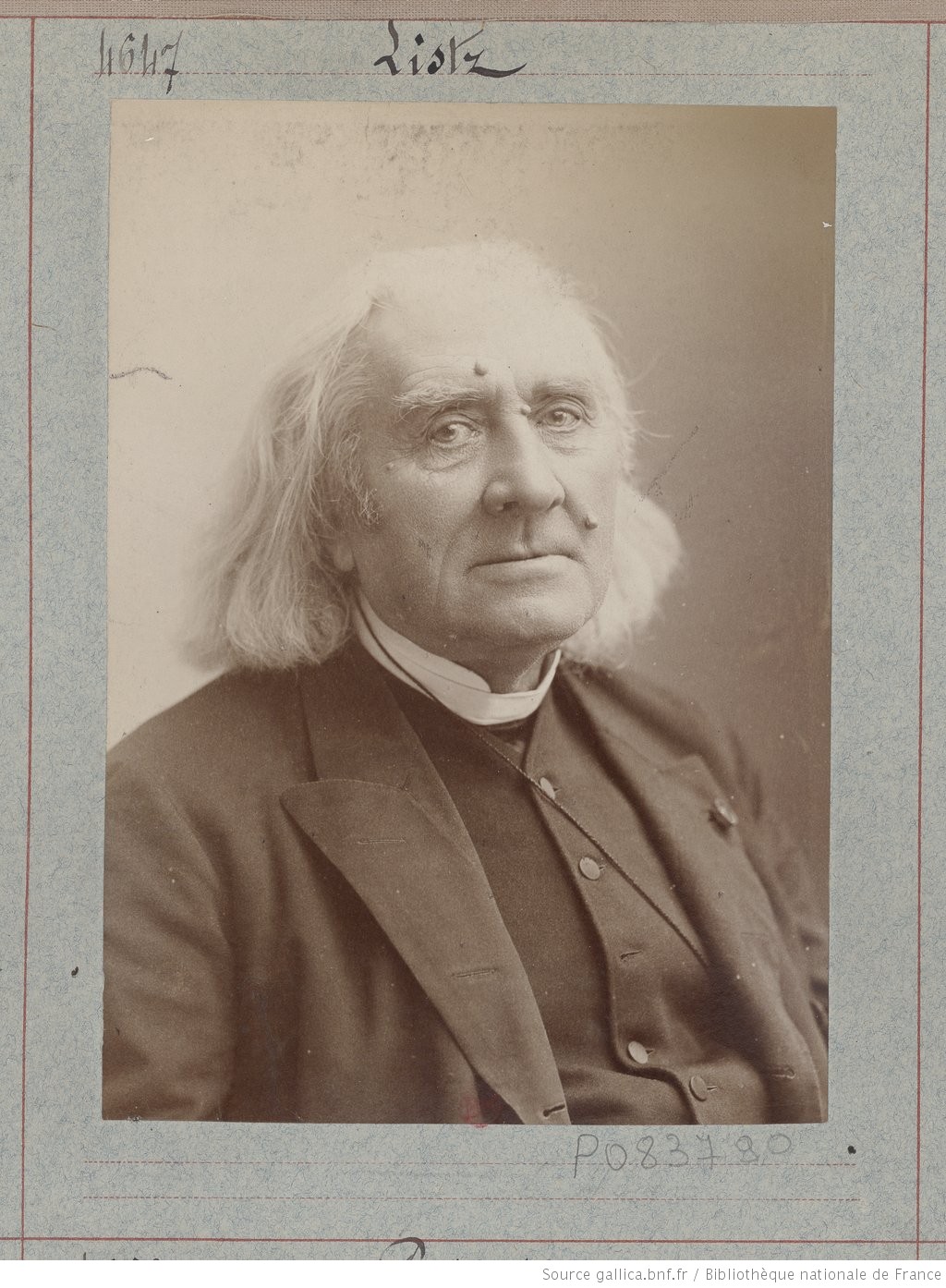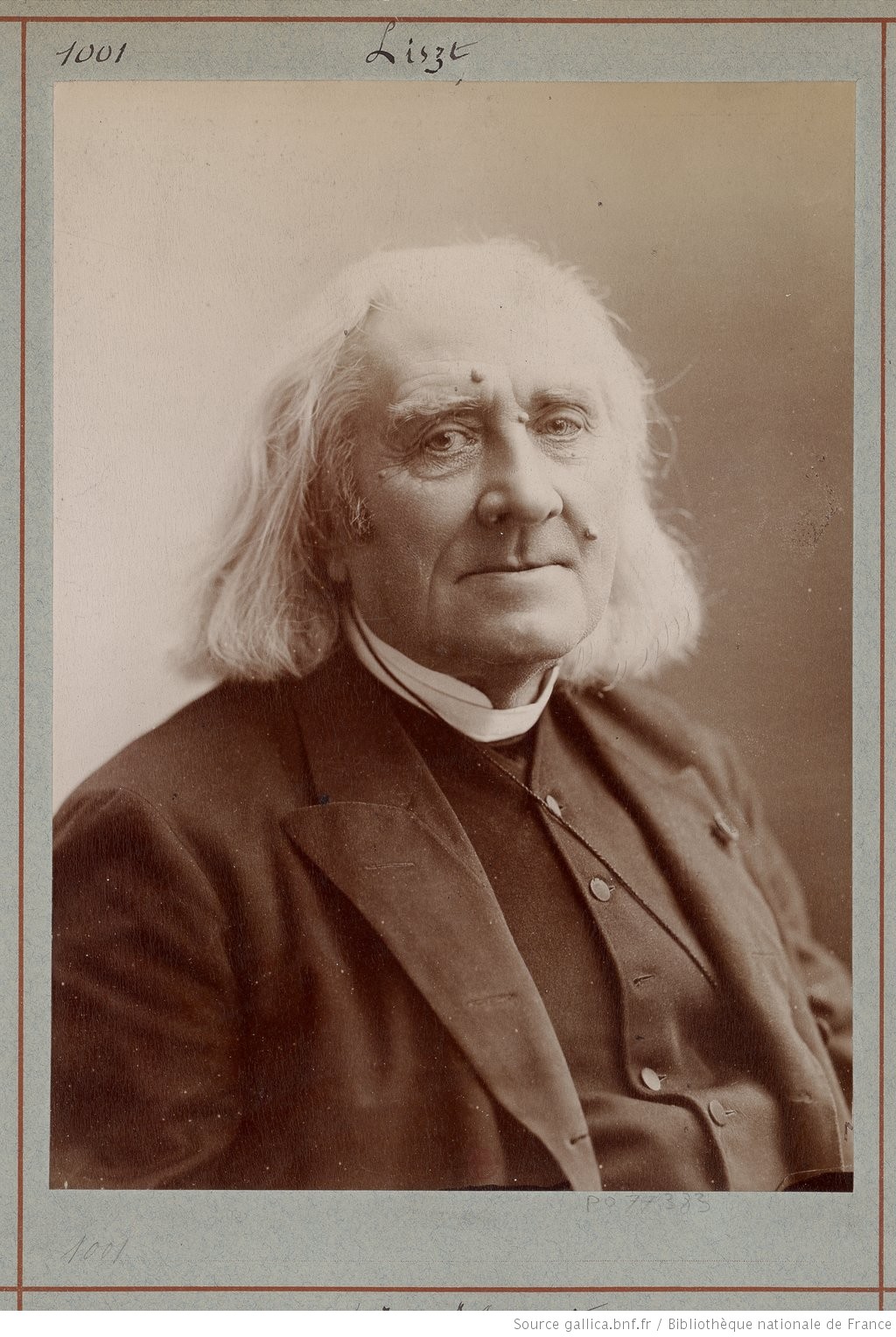Published on Franz Liszt Group, on June 3rd, 2022. If you want to know how the Story Behind series started, I give details in “Story Behind” Series #1″.
I am preparing my summer 2022 research trip. I will stop in Paris, Bonn, Weimar, and Budapest. Each archive has a lot of interesting pictures, and I was wondering which ones I could focus on for this new post. One of the last pictures of Liszt taken by Nadar is hanging on my wall. Liszt watches me. What I like about this picture is that he is half smiling, and depending on my mood or the way my day goes, I can see Liszt either reassuringly smiling at me, or looking at me with some concern. I already wrote about this last picture taken of Liszt by a professional photographer (“story behind” #21, post available here). While selecting the documents for my trip, I came across a digitalized version on the BnF website of the series taken by the talented Nadar in Paris in March 1886. Since these images are in the public domain, I thought you might enjoy seeing the whole series. I will associate each picture with its reference. The last picture is the one in which Liszt is looking at me right now.
A little bit more about Nadar (1820-1910). This Parisian photographer had several hats and lived a long life. His real name was Gaspard-Félix Tournachon. He started as a caricaturist and novelist (first publication in 1848). His pen name was Tournadar, which became Nadar. He quickly found interest in photography. Since he wanted to explore innovative techniques, he invented methods to take pictures from heights and in the dark. He became the first person to take aerial photographs from a hot-air balloon (first aerial picture in 1858), and developed artificial lights techniques to take pictures in the Paris catacombs (in 1861). He expanded his activities and became a renowned portraitist. His most famous portraits represent Charles Baudelaire, Sarah Bernhardt, Claude Debussy, Eugène Delacroix, Gustave Doré, Alexandre Dumas (father), Charles Gounod, Victor Hugo on his deathbed, Franz Liszt, George Sand, Jules Verne, Émile Zola. The list is non-exhaustive. If you want to know more about his life and work, I recommend his autobiography “When I Was a Photographer”, and the book “The Great Nadar: The Man Behind the Camera” by Adam Begley.
Note that the name of the composer has been written above the photographs. The eight first pictures contain a mistake. The archivist wrote “Listz” instead of “Liszt.” It comes from a long history of mistakes on the way to spell but also the way to pronounce his name in France. When he was a child, he was called “Le petit Litz.” Then the variants on the spelling were diverse, even in the press. This series of pictures come from the Nadar studio (Atelier Nadar). This is a scrapbook (“Album de référence de l’Atelier Nadar. Vol. 28”) referencing all pictures taken from 1875 to 1895, that was assembled after Nadar’s death. The name “Listz” was thus written by an unknown person. The last picture has the correct mention, “Liszt.” It also comes from a different scrapbook, probably because this is the picture that was selected from the series to be printed. It was referenced in “Album de référence de l’Atelier Nadar. Vol. 11” (1900) that contained all printed pictures from 1875 to 1895. The dimension of the orginal printed photograph was 22.3 x 16.2 cm. The negatives of this series are also available in the BnF archives.
